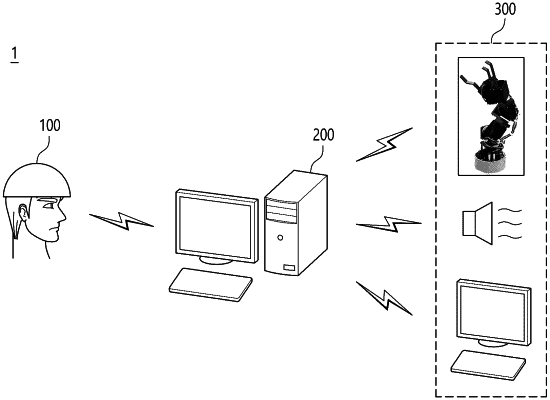| CPC G06F 3/015 (2013.01) [G06N 20/00 (2019.01)] | 16 Claims |

|
1. A device configured to perform an intention determination process, the process comprising:
receiving an indication of a thought mode selected by a user input;
selecting content according to the indication of the thought mode;
displaying the content while collecting a first brain signal sensed from the user while the user is viewing the displayed content;
extracting a first filtered signal from the first brain signal using a frequency band filter selected based on the indication of the thought mode, wherein the thought mode is selected from predefined thought modes, and the frequency band filter is selected from a plurality of frequency band filters each associated with the predefined thought modes;
generating physical information representing a physical magnitude of the extracted first filtered signal by calculating a first power spectral density from the extracted first filtered signal;
determining control information according to the physical information based on a classification model generated by learning control information representing a user's intent according to a pattern in the physical information provided in advance;
outputting a control command when the control command matches the control information; and
when the control command does not match the control information, regenerating the physical information by calculating a second power spectral density based on a second brain signal having a time and frequency different from the first brain signal,
wherein the regenerated physical information is input to the classification model to generate matched control information.
|